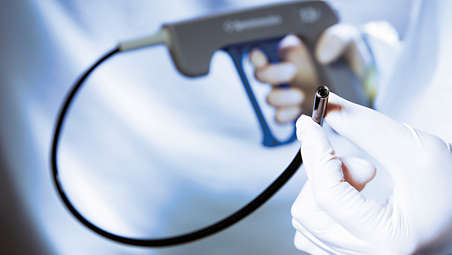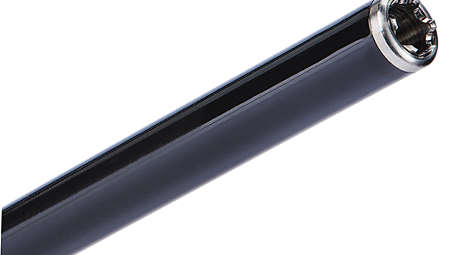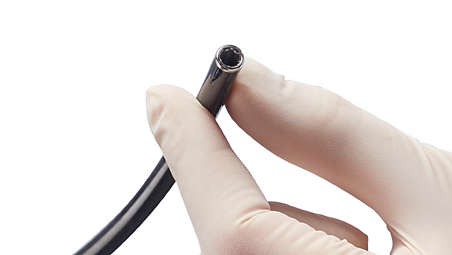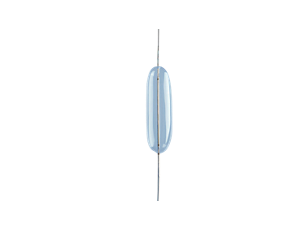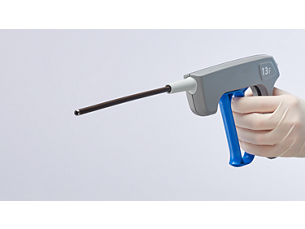Specifications
- Model number 545-509
-
Model number 545-509 Size - 9F
Device inner diameter - 9.2F / 0.119" / 3.0 mm
Device outer diameter - 15.9F / 0.207" / 5.3 mm
Outer sheath outer diameter - 20.0F / 0.266" / 6.8 mm
Working length - 18.7" / 47.5 cm
-
- Model number 545-511
-
Model number 545-511 Size - 11F
Device inner diameter - 11.2F / 0.145" / 3.7 mm
Device outer diameter - 18.0F / 0.234" / 5.9 F mm
Outer sheath outer diameter - 23.0F / 0.293" / 7.4 F mm
Working length - 18.7" / 47.5 cm
-
- Model number 545-513
-
Model number 545-513 Size - 13F
Device inner diameter - 13.2F / 0.171" / 4.3 mm
Device outer diameter - 20.0F / 0.260" / 6.6 mm
Outer sheath outer diameter - 25.0F / 0.319" / 8.1 mm
Working length - 18.7" / 47.5 cm
-
- Model number 545-509
-
Model number 545-509 Size - 9F
Device inner diameter - 9.2F / 0.119" / 3.0 mm
-
- Model number 545-511
-
Model number 545-511 Size - 11F
Device inner diameter - 11.2F / 0.145" / 3.7 mm
-
- Model number 545-509
-
Model number 545-509 Size - 9F
Device inner diameter - 9.2F / 0.119" / 3.0 mm
Device outer diameter - 15.9F / 0.207" / 5.3 mm
Outer sheath outer diameter - 20.0F / 0.266" / 6.8 mm
Working length - 18.7" / 47.5 cm
-
- Model number 545-511
-
Model number 545-511 Size - 11F
Device inner diameter - 11.2F / 0.145" / 3.7 mm
Device outer diameter - 18.0F / 0.234" / 5.9 F mm
Outer sheath outer diameter - 23.0F / 0.293" / 7.4 F mm
Working length - 18.7" / 47.5 cm
-
- Model number 545-513
-
Model number 545-513 Size - 13F
Device inner diameter - 13.2F / 0.171" / 4.3 mm
Device outer diameter - 20.0F / 0.260" / 6.6 mm
Outer sheath outer diameter - 25.0F / 0.319" / 8.1 mm
Working length - 18.7" / 47.5 cm
-
- Product availability is subject to country regulatory clearance. Please contact your local sales representative to check the availability in your country.
- TightRail is distributed by LifeSystems in Australia and New Zealand.
- Always read the label and follow the directions for use.
- Philips medical devices should only be used by physicians and teams trained in interventional techniques, including training in the use of this device.
- Philips reserves the right to change product specifications without prior notification
- ©2025 Koniklijke Philips N.V. All rights reserved. Trademarks are the property of Koninklijke Philips N.V. or their respective owners.
